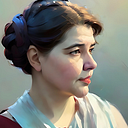Member-only story
Undead White Dwarfs Discovered
Astronomers and planetary scientists are guilty of constantly anthropomorphizing space objects, and giving in to the temptation to see familiar shapes in the stars.
The way we steal the language of what it means to be alive can sometimes get a bit disturbing though. We talk about stars as being alive when they have nuclear reactions going on in their cores, and we call them dead when… well… they don’t have nuclear reactions in their cores.
For about 100 years, we’ve referred to white dwarfs as dead stars. These moon-sized objects are the leftover cores of Sun-like stars that have run out of fuel for their core’s nuclear reactions.
Thing is, new Hubble Space Telescope images seem to show undead white dwarf stars with nuclear burning taking place on their surfaces. This was discovered while astronomers were looking at the evolution of stars in the globular clusters M3 and M13. Remarkably, 70% of the white dwarfs in M13 appeared to be hotter than they should be, and this difference in temperature was consistent with the stars holding onto some residual hydrogen on their surfaces, where their extreme gravity allowed that hydrogen to undergo nuclear burning, and thus heat up the star. Why is this happening? I can’t actually tell what theories the scientists had because the article is hidden behind a paywall, but the why isn’t actually the…
